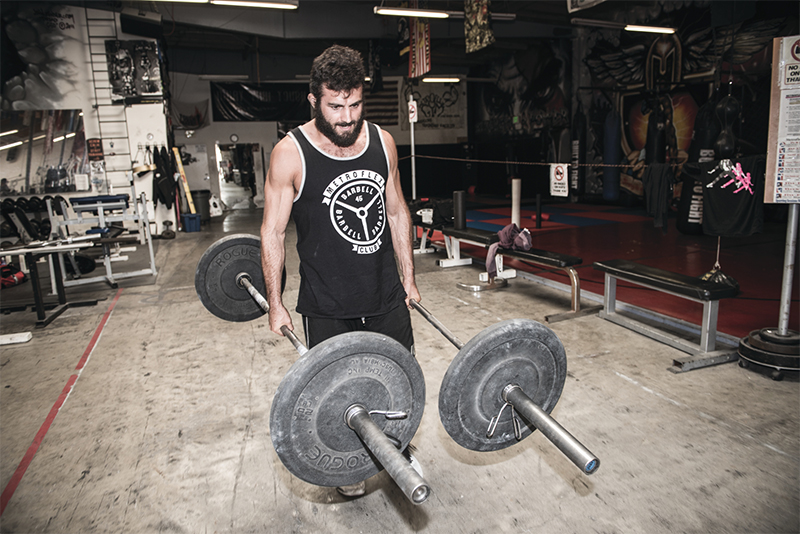

Loaded walks can help develop overall strength, endurance, and force some surprising muscles to grow,
By Team Iron Man
For the last few years, the phrase “functional fitness” has become a catchall “get out of jail free card” to excuse ridiculous exercises that might get you tired but won’t actually build any muscle or develop real strength you can use in your everyday life. The exception to this is a category of exercises known as loaded carries.
The ability to bear a heavy load over a long distance or for a predetermined period of time has been a valuable asset since man began to walk upright and has undoubtedly played a large part in human evolution and survival of the fittest. As strength coach Mark Rippetoe says, “Strong people are harder to kill than weak people and more useful in general.” And loaded carries definitely make you strong.
Getting proficient at loaded carries will allow you to operate with a slightly higher heart rate and at a greater level of exertion. You’ll be able to handle more volume, more reps, and recover more quickly between sets. The ability to do more work in the gym means more calories utilized and more muscle fibers activated. While loaded carries are considered to be more for function than aesthetics, they can help boost your physique in certain ways that traditional lifts do not.
“Loaded carries are great for developing the traps and the deep cervical extensor complex, adding a nice full shape to the shoulders. They also help upregulate the fibers of the abdominal wall, building nice symmetry of the rectus abdominis and obliques,” says strength coach and kinesiologist Brian Richardson, MS, CPL2, NASM-PES, the co-owner of Dynamic Fitness in Temecula, California.
Loaded carries also do wonders for your core. While most people overuse abdominal flexion movements such as crunches, the ability to brace the spine and maintain an erect torso under stress is a foundation of healthy movement. Richardson points out that unilateral lifts such as the waiter’s walk or suitcase carry are “phenomenal for contralateral oblique development, leading to fingerlike development of the obliques.”
Loaded carries are highly versatile and can play a part in almost any portion of your workout. Try them three to four sets as warm-up before your workout for one long interval (five to six minutes) in the main portion of your training to improve conditioning, or as a circuit finisher to burn more calories or increase work capacity in a specific area. IM
The Yoke
You might have seen this event on ESPN’s World’s Strongest Man. In this exercise, the load is distributed across the shoulders, like a traditional back squat. Instead of taxing the grip, it bypasses potential weak links and spreads the challenge throughout the entire body.
If you have access to a yoke, then use it. But a simple loaded barbell is the most accessible version of this move. Begin with a weight that is close to twice your own bodyweight. Load the bar on the outside J-hooks of a squat rack at the same height you use for squats. If you’ll be carrying it across your back, consider using the pad or wrapping a towel around the bar. Facing away from the rack, get under the bar, tighten your torso and glutes, and stand up. Focus on a spot straight head of you and begin walking. Be sure to maintain rigidity throughout your torso for the duration of the carry.
The Farmer’s Walk
Select a heavy pair of dumbbells and grasp one in each hand with a full overhand grip. Try to use dumbbells that are each equivalent to at least 75 percent or more of your bodyweight. After you stand up, center your weight, roll your shoulders back, squeeze your glutes, activate your core muscles, and begin walking. You need to make your core rigid enough that the weight does not cause you to veer off your course. Making small rapid steps will afford you more control over the weight than using a longer stride.
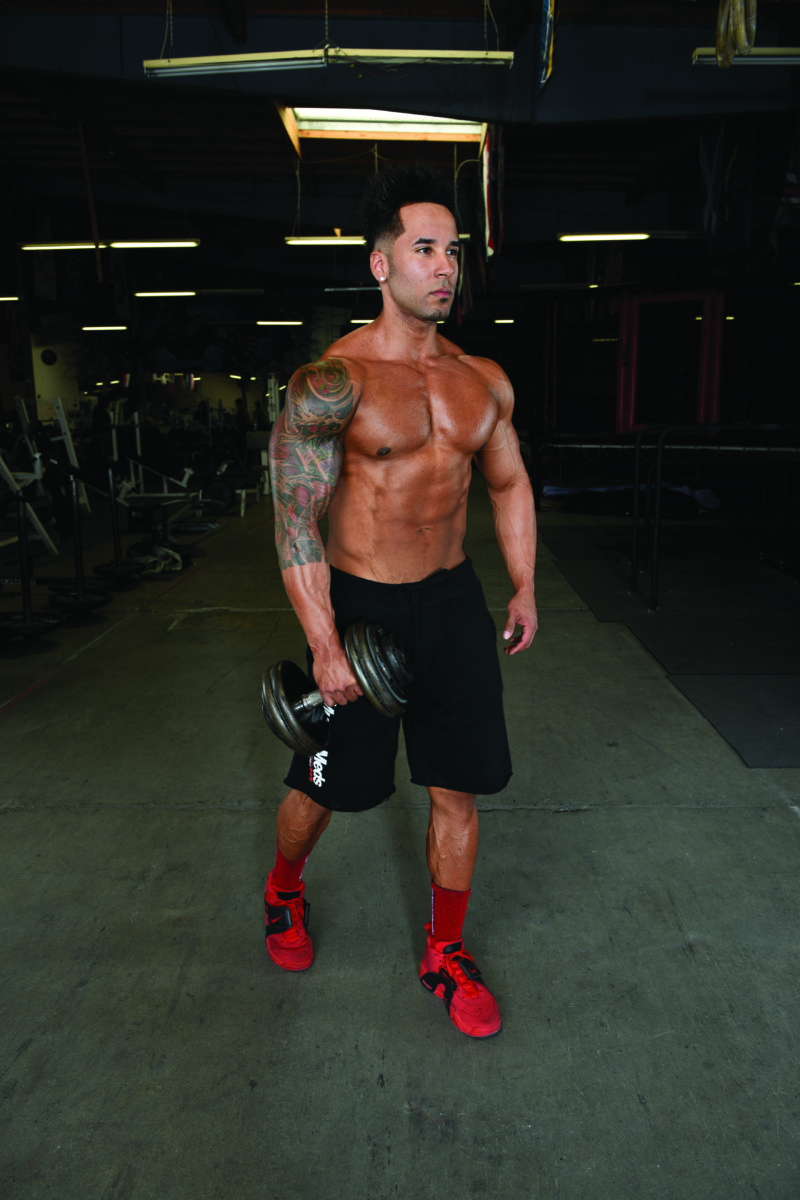
Suitcase Dumbbell Carry
A suitcase carry is identical to a Farmer’s Walk, except that weight is held only in one hand. Stay as tall as possible, with your chest up and squeezing your core and glutes as hard as you can to maintain stability. Create some tension in your non-working side by squeezing your non-working hand into a fist and flexing the opposite-side lat to help brace the torso.
One-Arms Bottoms-Up Carry
Take a kettlebell by the handle and hold it so it’s upside down with the bottom pointed straight up at the ceiling. Keep your elbow bent at 90 degrees and just below shoulder height. Hold your hand close to your chin and do not allow the elbow flare out to the side. Keep your forearm aligned under the weight. Do not allow the weight pull your arm one way or the other and roll over toward your wrist. Focus on stabilizing your trunk and keeping your posture erect. Be sure to perform the movement on both sides.
Waiter’s Walk
This exercise is great for core stability and shoulder health. Hold a dumbbell in one hand and extend directly over your head, with your elbow locked out. Your palm should be facing in and the handle of the dumbbell parallel to the floor. Keep your grip as tight as possible and your core nice and rigid as you walk for time or distance. Be sure to switch off hands.






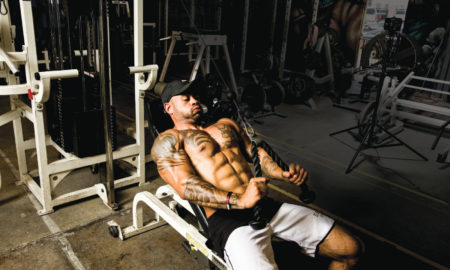
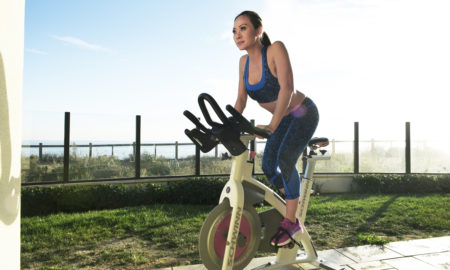





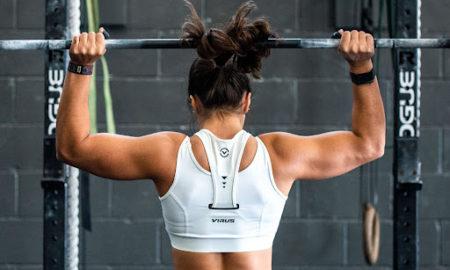

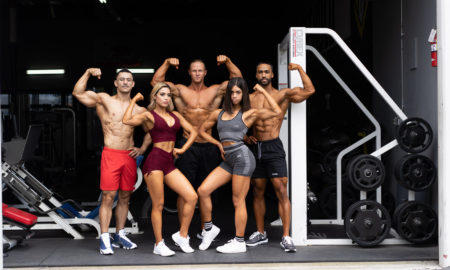
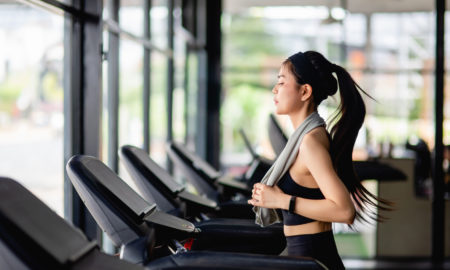

You must be logged in to post a comment Login